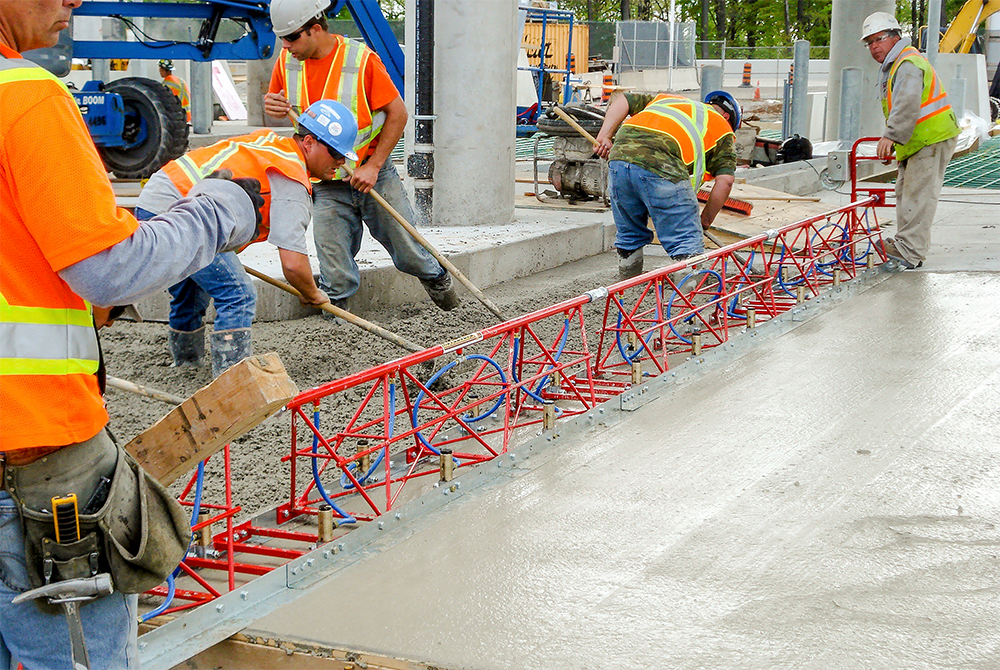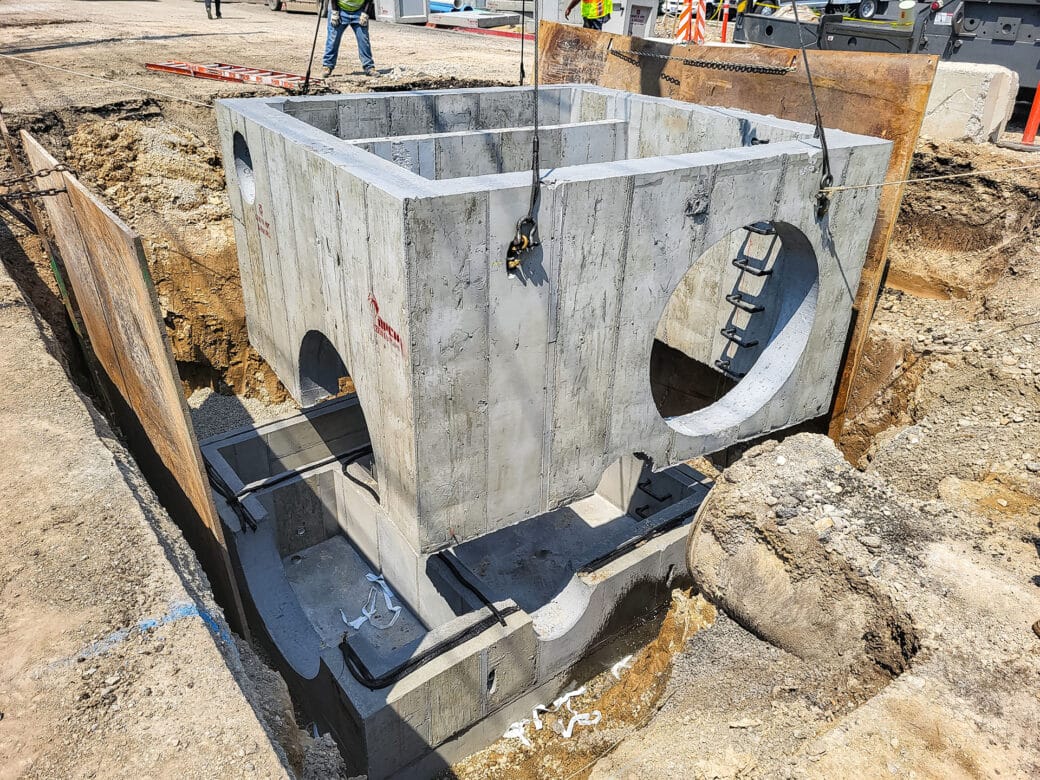Comprehending the Various Applications of General Engineering Concrete in Diverse Industries
When you think about the lots of means basic engineering concrete effects different sectors, you'll find its applications are both broad and vital. From supplying sturdy structures for transportation networks to supporting ingenious power remedies, this product plays a crucial duty fit our framework. But what about its influence on metropolitan growth and environmental engineering? Checking out these facets can disclose far more than you could anticipate.
The Duty of Concrete in Building and Building Projects
Concrete plays a vital duty in building and building projects, making up around 70% of all products utilized in modern-day frameworks. You'll locate it in structures, walls, and floors, giving toughness and longevity. When you pick concrete, you're choosing a material that can hold up against weather conditions, resist fire, and support hefty loads. Its adaptability allows for numerous applications, from household homes to imposing skyscrapers.Mixing concrete with additives can improve its homes, improving workability and setting times. You can also mold it into various forms, permitting for creativity in design. As you deal with your projects, consider the environmental benefits of making use of concrete, such as its capability to reduce power usage in structures. Overall, concrete's dependability and flexibility make it a cornerstone of the building market, guaranteeing that structures are not just useful however also risk-free and lasting.
Framework Advancement: Roads, Bridges, and Passages
When it involves infrastructure development, roadways, bridges, and tunnels are critical parts that link communities and assist in transport. You depend on these frameworks daily, whether you're commuting to function or taking a trip fars away. General engineering concrete plays a necessary duty in their construction and sturdiness. Its strength and flexibility permit engineers to make robust roads that withstand rush hour and extreme weather condition conditions.Bridges, often extending rivers and valleys, require specially formulated concrete to ensure safety and durability. Making use of strengthened concrete in passage building not just supports considerable weight but also enhances resistance versus water infiltration and ground movement.

Concrete in Transportation: Enhancing Flexibility and Security
As you browse through bustling cities and rural roadways, the role of concrete in transportation becomes noticeable, significantly boosting both wheelchair and security. Concrete's longevity assurances that roads, runways, and bridges hold up against rush hour and extreme climate condition. This durability minimizes the demand for constant repair work, maintaining your trips smooth and reliable.In enhancement, the design flexibility of concrete enables ingenious structures like walkways and passages, which efficiently reduce congestion and enhance web traffic circulation. You'll discover that concrete surface areas additionally supply much better traction, reducing the chance of mishaps in damp conditions.Moreover, the usage of concrete in railways aids preserve security and security for trains, making your journeys extra efficient. On the whole, concrete's contributions to transport not only enhance your movement however also considerably bolster public safety, reflecting its important role in the facilities you rely on day-to-day.

Energy Sector Applications: From Nuclear Power Plant to Renewable Power
In the energy field, concrete plays a substantial function in the construction and procedure of nuclear power plant click here for more info and renewable resource setups. You'll locate it important for building tough structures, supports, and containment frameworks that stand up to extreme conditions. In thermal power plants, strengthened concrete structures guarantee safety and security and longevity versus high temperatures and pressure. West Coast General Engineering industrial concrete.When it concerns renewable power, concrete is important for wind turbine bases, photovoltaic panel places, and hydroelectric dams. It offers the stability needed to harness energy successfully. You could not understand it, however the concrete utilized in these applications is specifically formulated to satisfy specific efficiency requirements, like resilience and resistance to environmental aspects
Cutting-edge Concrete Solutions in Environmental Design

The Effect of Concrete on Urban Advancement and Landscaping
Concrete plays an important function in shaping urban advancement and landscaping, affecting everything from framework longevity to aesthetic appeal. When you consider cityscapes, concrete frameworks like bridges, roadways, and structures enter your mind, providing a durable foundation for urban life. You'll discover exactly how properly designed concrete paths and plazas improve public spaces, making them much more welcoming and functional.In landscape design, concrete deals convenience, making it possible for creative styles for patios, maintaining walls, and attractive features. You can create one-of-a-kind outside rooms that blend seamlessly with nature while keeping structural stability. Furthermore, concrete's capability to hold up against climate extremes assurances longevity, lowering the requirement for frequent repair work.
Future Trends and Innovations as a whole Design Concrete
As city landscapes progress, the demand for innovative concrete remedies is driving developments in general engineering. You'll see patterns leaning towards environment-friendly materials and lasting techniques. Researchers are concentrating on developing high-performance concrete that reduces ecological impact without sacrificing strength.Next-gen additives and blends, like recycled accumulations and bio-based materials, are obtaining grip, boosting resilience and lowering carbon impacts. Smart concrete innovation is also emerging, including sensors that keep track of architectural health in real-time, enabling proactive maintenance.You might find that 3D printing with concrete is coming to be extra practical, enabling complex designs and faster building timelines. In addition, the combination of self-healing concrete is on the surge, guaranteeing durability and lowering repair service expenses.
Frequently Asked Questions
What Are the Environmental Effects of Concrete Manufacturing?
Concrete production creates substantial carbon discharges, consumes water, and diminishes natural deposits. You can mitigate these effects by checking out sustainable options, maximizing mix layouts, and including recycled materials to minimize your ecological footprint and enhance sustainability.
Just How Does Concrete Compare to Other Structure Materials?
Concrete's toughness and toughness frequently outperform materials like wood and steel. It's versatile, cost-effective, and energy-efficient, but its environmental effect can be substantial. You'll wish to consider these variables when choosing building materials.
What Are the Different Kinds of Concrete Available?
There're numerous types of concrete available, including requirement, reinforced, high-strength, lightweight, and decorative. Each type offers particular objectives, so you can pick the one that finest fits your task's requirements and requirements.
Just How Is Concrete Recycled and Recycled in Construction?
You can reuse concrete by crushing it into aggregate, which you then recycle in brand-new building and construction jobs (West Coast General Engineering concrete foundation). This procedure decreases waste, decreases prices, and minimizes the environmental effect of sourcing brand-new materials for your builds
What Precaution Are Needed When Collaborating With Concrete?
When dealing with concrete, you must put on protective equipment, like gloves and more info here goggles, guarantee appropriate ventilation, and utilize safe lifting strategies. Always follow security guidelines to protect against injuries and preserve a safe workplace.